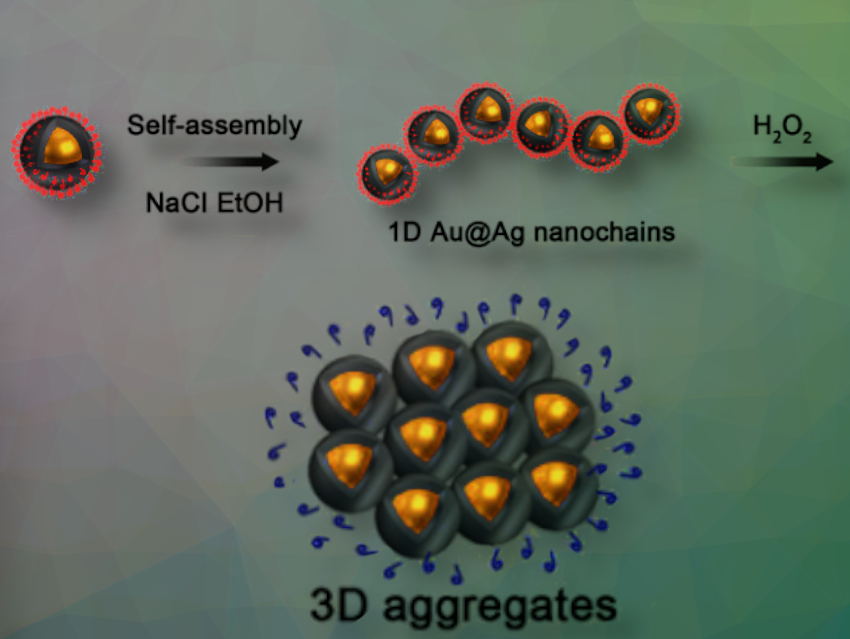Theranostics is a medical approach that combines therapy and diagnostics to simultaneously diagnose and treat diseases. Theranostics has great potential for precision treatment of various cancers. In this context, one-dimensional (1D) nanochains of plasmonic nanoparticles have gained attention due to their adjustable photothermal conversion efficiency and extremely active hot-spot characteristics generated by localized surface plasmon resonance (LSPR). In this effective platform for the detection of biomolecules, light interacts with noble metal nanoparticles, producing a collective oscillation of conduction band electrons.
However, most current research focuses on gold nanochains because they are relatively easy to synthesize and regulate. In contrast, little attention has been paid to the integrated application of core-shell plasmonic nanochains in diagnosis and treatment.
Dong Han, National Center for Nanoscience and Technology and Qing-Hua Xu, National University of Singapore/National University of Singapore (Suzhou) Research institute, and colleagues provide a theranostic system for near-infrared theranostics that responds to the tumor microenvironment (TME) by converting 1D silver-coated gold (Au@Ag) nanochains into three-dimensional (3D) aggregates. This chain structure uses a redox reaction to induce instability, causing the Au@Ag nanochains to aggregate. The common redox interaction between the overexpressed H2O2 in the TME and citric acid ligands, which act as stabilizers, is thought to be responsible for this aggregation.
This change results in a redshift of the LSPR band maximum to the NIR spectral window, which is preferred for clinical applications. Once the 1D Au@Ag nanochains are activated by the TME, the formed 3D Au@Ag nanoaggregates show superior photothermal conversion efficiency of 60.2% under 808 nm laser irradiation. This H2O2-stimulated response enables photothermal therapy specifically in cancer cells, minimizing side effects to normal tissues. Both in vitro and in vivo studies showed a significant tumor elimination by 1D Au@Ag nanochains.
- A “Transformers”-like nanochain for precise navigation and efficient cancer treatment,
Sichao Tian, Qian Zeng, Zhanglu Hu, Weidong Zhang, Zhuo Ao, Dong Han, Qing-Hua Xu,
Aggregate 2024.
https://doi.org/10.1002/agt2.572




